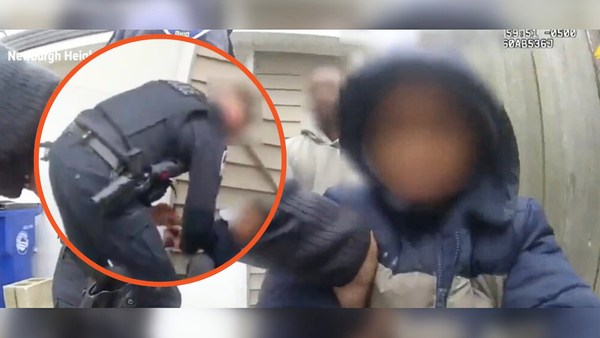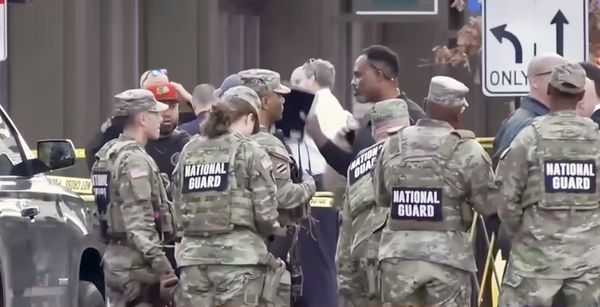Fentanyl was 26-year-old Bree Dobbins’ drug of choice.
Unlike other North Texans killed by counterfeit pills they didn’t know were laced with the cheap and lethal synthetic opioid, Bree knew exactly what she was snorting.
“I go to extremes,” she said as we sat in her sober-living house in Plano, Texas. “I built up a tolerance to it, and I was always chasing to get to that feeling of euphoria that I had earlier in my using.”
Fentanyl’s powerful addiction led Bree into multiple overdoses. On the edge of death six times in three years, she survived only because of emergency doses of Narcan.
This nasal spray, which contains the medication naloxone, reverses an opioid overdose. Bree, like many users, keeps a supply handy at all times.
She suffered the last overdose in early 2022 while watching a movie with a friend in her Dallas apartment. “I was secretly doing more fentanyl than he realized,” she recalled. “All of a sudden I felt heavy and couldn’t stay awake.”
Her fists became tight. Her lips turned purplish-blue. Every breath was both short and slow. Her body, almost deadweight, was difficult to move.
Bree survived only because her friend knew where she kept her overdose remedy.
“I woke up to that cold feeling that you get when you’re Narcaned,” she told me. “You can’t get warm. Blankets won’t help. It’s just your body’s reaction.”
That wasn’t the last time Bree used fentanyl, but today she’s several months sober and determined to live a different life.
As the crisis of fentanyl — which the feds in August described as “the single deadliest drug threat our nation has ever encountered” — grows in North Texas, stories such as Bree’s have gotten far less attention than those of accidental poisonings.
I’ve written in recent months about deaths in which a trace of fentanyl proves lethal. The synthetic opioid is more than 100 times as potent as morphine and 50 times stronger than heroin.
Many of its victims believed they were taking a Xanax, an OxyContin or a Percocet but purchased what was actually a counterfeit prescription pill. The illicit pressed-powder tablets, often blue in color and imprinted with M and 30, use inexpensive fentanyl as a filler to cut costs.
But for Bree and many others like her, fentanyl — which she bought as loose powder or easily crushable M30s — is the opiate at the heart of years-long addictions.
Born and raised in what she describes as a great family in Columbia, Missouri, Bree discovered Percocet for the first time at 19.
She moved on to fentanyl and her drug use “affected everything.” The spiraling insanity of addiction set in: Doing the same thing over and over and expecting different results.
Bree’s stays in rehab would go great, ditto for the months that followed in sober living houses. Loving family members were supportive but not enabling.
Then she’d decide to leave her supportive house and quit intensive outpatient work and recovery meetings.
Next the deadly old thought crossed her consciousness: “I’m just going to do it again. Why not?”
Any reader inclined to pass judgment on Bree most certainly hasn’t suffered through the illness of addiction or walked alongside a loved one’s journey.
“It’s really hard to explain to people,” Bree said. “I’d have the mindset that I wasn’t going to do this anymore, and it would just come right back.”
About two and a half years ago, just out of the Hazelden Betty Ford rehab facility in Center City, Minn., Bree moved to North Texas, where she had extended family.
Her longtime boyfriend moved here as well, and soon she became pregnant with a child who is now 17 months old.
Through it all — even after her boyfriend moved back to Missouri — Bree maintained her abstinence. She had a job and her own apartment and was taking courses to prepare to become a dental hygienist.
About a year ago, after dropping off her son for a visit with her parents in Missouri, she recalled, “again that thought popped into my head.”
The same old story was developing: She had previously quit her recovery work and eventually wound up in her most recent overdose-Narcan episode.
Like so many people with addiction disorders, Bree can handle the extremes — the chaos fentanyl brings on and the glow of new sobriety — but managing the middle ground of life is much harder.
For the first time, she has surrendered to the fact that recovery work is not something she can do for a while and then put in her rear-view mirror.
“I’m accepting that this is something that’s going to have to be part of my life for the rest of my life.”
Bree’s parents bring her son for frequent visits, and she FaceTimes with him nightly. She’s eager to resume being his primary caregiver and to get back to her dental hygienist studies.
But she knows the Silver Linings Sober Living house is where she belongs right now.
Lizzie Butler and her mother, Stephanie Kelly, co-founded the nonprofit and opened the house in July 2021.
Lizzie, who is 30 and serves as the organization’s executive director, has been free of her own addiction to opiates and other intoxicants for almost six years.
While she knows many unsuspecting young people are dying after taking fentanyl-laced pills, she and Bree are among those with complete clarity the drug can kill them.
“With heroin, fentanyl, any opiate, there’s such a fine line between enough and too much,” Lizzie told me. “I knew that any time I used it, I might cross that line. I still did it.”
Lizzie said overdoses crept up on her with a feeling of dread similar to that when you realize you’re nodding off while driving down the highway.
“It’s like you are going to sleep and not waking up,” she said. “You try to fight it, but you can’t.”
With fentanyl overdoses growing — among both people who know exactly what they are taking and those who don’t — Lizzie is flabbergasted that so many remain in the dark about the drug and about the overdose-reversing Narcan.
“My son is probably the only 12-year-old at his school who knows what fentanyl is,” she said. “It’s good to educate them because there will be kids experimenting who do get fentanyl poisoning.”
Lizzie, who is studying to be a licensed chemical-dependency counselor, said that of the 75 or more women who have come through the Silver Linings sober-living house, at least 30 dealt with fentanyl addiction.
“Those new users, the kids who are poisoned, have no tolerance to it,” she said. “But the other demographic, the one I was in, to get the feeling they want, they don’t care if they die.”







